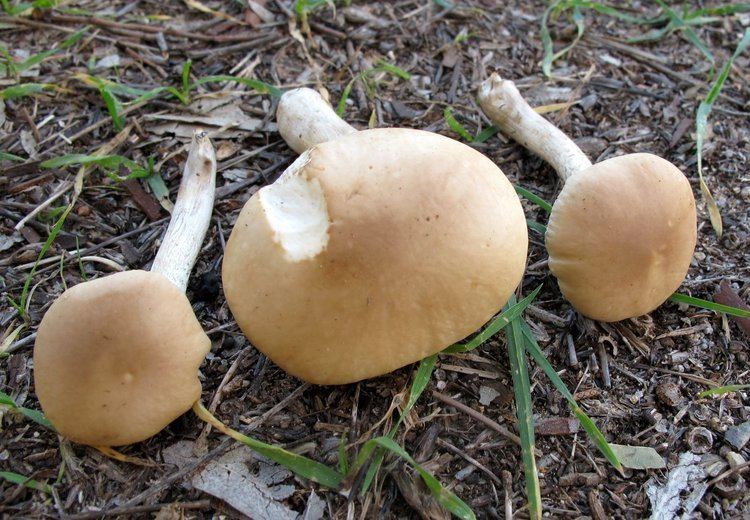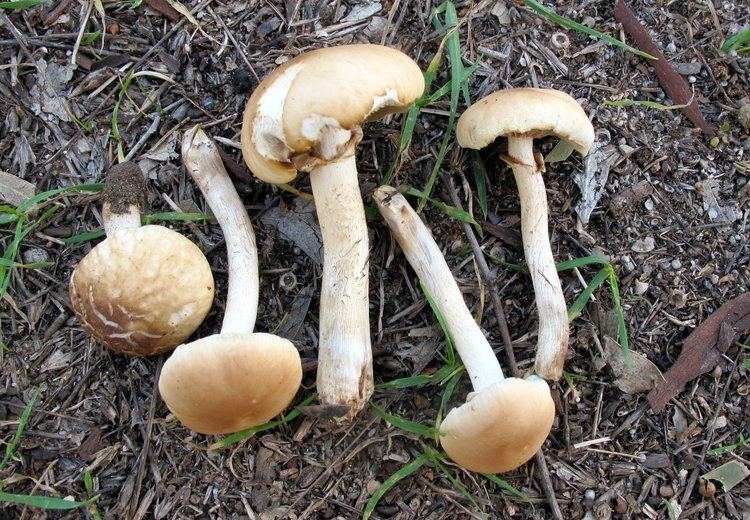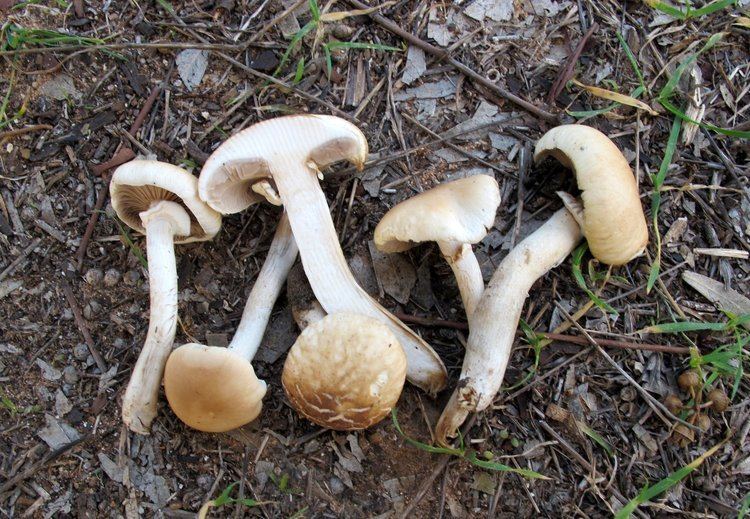Kingdom Fungi Order Agaricales Genus Cyclocybe Higher classification Agrocybe | Division Basidiomycota Scientific name Agrocybe aegerita Rank Species | |
Similar Pleurotus pulmonarius, Macrolepiota procera, Pleurotus eryngii, Tricholoma terreum, Boletus aereus | ||
Cyclocybe aegerita, also called Agrocybe cylindracea, Agrocybe aegerita or Pholiota aegerita, is a mushroom in the genus Cyclocybe which is commonly known as the poplar mushroom or velvet pioppini (Chinese: 茶树菇, literally "Tea Tree Mushroom"). In Japan, it is called Yanagi-matsutake (Japanese:柳松茸).
Contents
Description
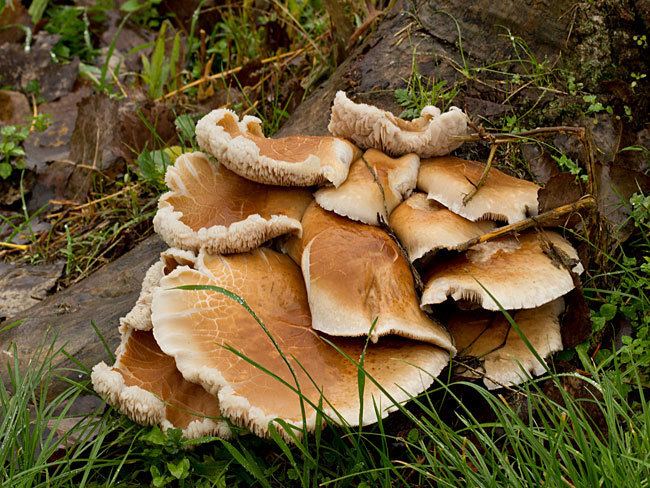
It belongs to the white rot fungi and is a medium-sized agaric having a very open and convex cap, almost flat, with a diameter of 3–10 centimetres (1.2–3.9 in). Underneath, it has numerous whitish radial plates adherent to the foot, later turning to a brownish-grey colour, and light elliptic spores of 8–11 by 5–7 micrometres. The white fibre foot is generally curved, having a membranous ring on the top part which promptly turns to tobacco colour due to the falling spores. When very young, its colour may be reddish-brown and later turn to a light brown colour, more ochre towards the centre, whiter around its border. It grows in tufts on logs and holes in poplars, and other large-leaved trees.
Edibility
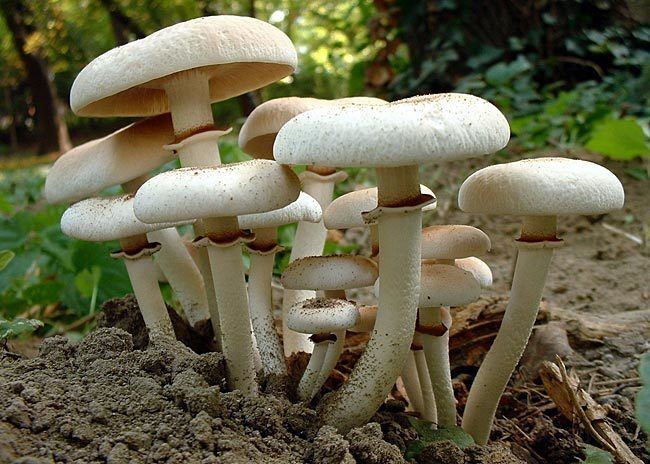
The mushroom is cultivated commercially. It is used in Chinese cooking, both fresh and rehydrated, in various dishes, including stir-fry, soup, stew, and hot pot. While edible, it is not advised to eat specimens from the wild due to the difficulty in identification.
Uses
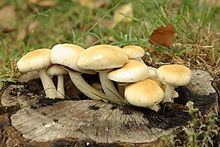
It is cultivated and sold in the United States, Chile, Japan, Korea, Australia and China. It is an important valuable source possessing varieties of bioactive secondary metabolites, such as indole derivatives with free radical scavenging activity, cylindan with anticancer activity and agrocybenine with anti-fungal activity. In Traditional Chinese Medicine, it is often used as a diuretic.
